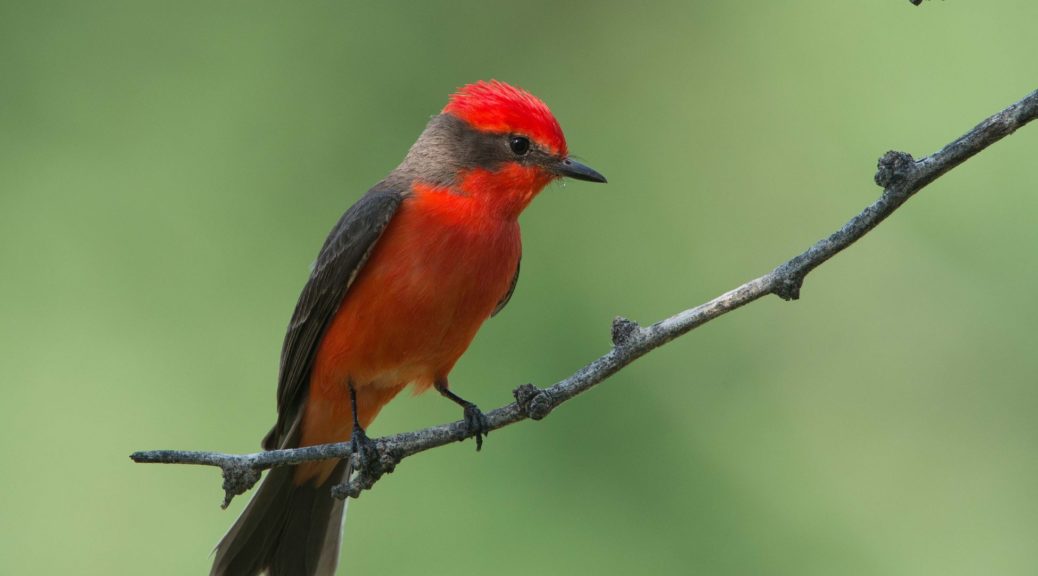Last month we asked you to share some of your most influential birding books—here are a few favorite books that got you hooked!
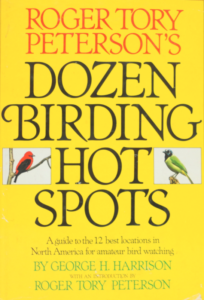
PEG ABBOTT
- The Complete Birder, Jack Connor, 1988. This birding book transformed my birding from watching and matching to a field guide to the art of comparative study between species. It helped me pace myself for careful study of shorebirds and even gave me hope for gulls. A gem still relevant today.
- Roger Tory Peterson’s Dozen Birding Hotspots, George Harrison, 1976. This publication came two years post high-school graduation for me and I was already birding from escapades in my first car, a Plymouth Duster my parents had passed on to me. I immediately pointed it to the first hotspot I explored, Cave Creek Canyon. I said right then, someday I am going to live here (I do now). I got to all of the hotspots and many more but it gave me my first map and sense of urgency to get out and see these premier places.
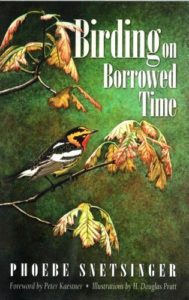
PAT LUEDERS
- Birding on Borrowed Time. When Phoebe Snetsinger died, my local paper did a front page story about her. I discovered she lived only two blocks from me, so I read her biography, Birding on Borrowed Time, discovering there was a hobby of birding all over the world.
- Kenn Kaufman’s Kingbird Highway inspired me to learn about, and chase, birds throughout the U.S.
Because of these two books, I enrolled in a Beginning Birders class at the Missouri Botanical Garden.
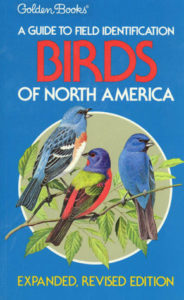
KEITH HANSEN
Undoubtedly the two birding books that initially inspired me at the start were:
- Golden Guide to Birds of North America by Chandler S. Robbins, artwork by Arthur Singer
- The four volume set by William Leon Dawson to the Birds of California.
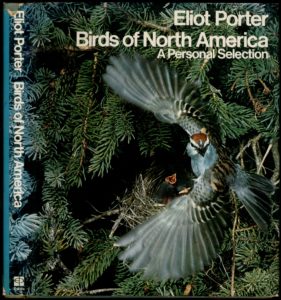
GREG SMITH
- From William Leon Dawson’s account for Bufflehead in Birds of California: “We would cuddle him in our arms, and stroke his puffy cheeks and rainbow hue, or give a playful tweak to his saucy little nose. But he does not immediately reciprocate our desire to fondle him…”.
- And then there is Eliot Porter’s Birds of North America: A Personal Selection, a birding book that instilled in me all the ethical and positive feelings generated by my photography of the world of natural history.
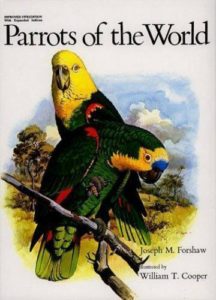
CARLOS SANCHEZ
- Golden Guide to the Birds of North America— Chandler S. Robbins, Herbert S. Zim, Bertel Brunn— 1966: This is the classic field guide that introduced many in the United States to the birds of North America, and I studied the copy at my elementary school endlessly. I was especially interested in artwork and sketching at the time, and I would often practice by copying individual birds from the book onto blank pieces of paper.
- Parrots of the World— Joseph Michael Forshaw— 1977: This is a beautiful birding book full of information and scientific illustrations on every single known parrot species, my favorite group of birds. I eventually even got to go to Bowra Station in Queensland, Australia in 2009 to visit the very same place where Forshaw made a lot of his observations on parrots!
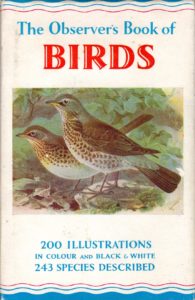
GERARD GORMAN
- The Observer’s Book of Birds by S. Vere Benson (any Brits of a certain age reading this will know it). It was one in a series (with Birds Eggs, Butterflies, Trees, Fungi, Horses, Dogs, Postage Stamps, etc., etc.). An absolute little pocket-sized gem, with paintings of every bird in Britain and succinct texts. I devoured that book. I still have it.
- My Year with the Woodpeckers by Heinz Sielmann. This birding book made a huge impression on me. It was first published in 1959 (before I was born!). It mainly tells the story of how Sielmann, a German zoologist and film-maker, filmed INSIDE the tree cavity nests of woodpeckers. I got the book after watching him interviewed on TV and seeing his black-and-white film of nesting woodpeckers on a BBC nature program. It was incredible stuff, he was the first to do it and, compared to today, with very basic equipment.
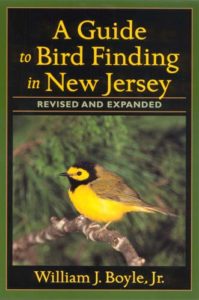
RICK WEIMAN
- Birds of North America field guide (Golden Press). I was a biology major at Rutgers College (before it was a University) and in 1981 I enrolled in an Ornithology course taught by Dr. Charles Leck (who unbeknownst to me was also the State Ornithologist for New Jersey). The Golden field guide was one of the birding books we had to purchase and using this guide we had to learn 150 birds for the course including their orders, families, and Latin names. This book and Dr. Leck started me on my birding path and has led to all of the wonderful places I’ve been and many of friends I’ve met since that share my passion.
- A Guide to Bird Finding in New Jersey by William (Bill) J. Boyle, Jr. When I began birding after college this was the birding book I purchased to help me explore NJ in search of birds. It was my bible and my road map and I still use it today. The book lists all of the author’s best birding spots in NJ with maps, directions, and times of year certain species may be present. It is in this book I first read about the wonders of Cape May, a place I have visited many times since in the spring and fall. Trips to Cape May led me to NJ Audubon and the wonderful people at the Cape May Bird Observatory. I soon joined CMBO’s World Series of birding century run teams and learned from birders like Pat & clay Sutton and David Sibley (yes, that David Sibley) who worked at CMBO way back then. Years later I joined the NJ Audubon “Wandering Tattlers” team made up of board members and corporate sponsors (that’s how I punched my ticket) and our leader every year was none other than Bill Boyle. Bill and I still keep in touch, and his book really was a huge part of my discovering what an awesome state I live in for both people, nature, and birds.
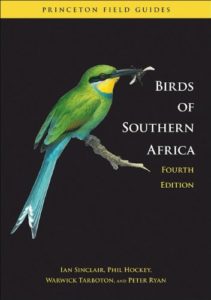
BOB MEINKE
Although I’ve essentially been a biologist since I was eight years old—probably from the day I returned to our family campsite with a 50-inch Bull Snake draped across my shoulders, scaring my poor mother witless—my appreciation for birding developed in fits and starts. Not surprisingly, my hotly anticipated career in herpetology never materialized, and I ultimately spent much of my youth in the Mojave Desert peering through a hand lens, honing what would eventually become a professional interest in plant taxonomy. But still not limiting myself to botany at that point, I wanted to know the names of everything I ran across, and not just the wildflowers. What lizard was that, and that dragonfly, and by the way, what were those pale little birds that blended in so well under the creosote bushes?
They were Horned Larks, I learned, though not from a book or a field guide, but a simple pamphlet handed out by the National Park Service at Lake Mead. But the seed was planted. Years went by, I was now teaching at Oregon State, and I continued to flirt with a passing interest in birding—a Pileated Woodpecker here, a Clark’s Nutcracker there. Fate had to intervene it seemed, and in 1994, as I was organizing a research trip to the Prudhoe Bay oilfields, I came across a publication by Alfred Bailey entitled Birds of Arctic Alaska (published 1948). How it ended up stacked near the floristic manuals and plant presses we were loading up for Prudhoe is a mystery, but there it was, so I tossed it in my rucksack.
Travel from Oregon to Deadhorse took a full day, and with time to kill I flipped open Bailey’s book, which detailed an expedition he took to the Arctic coast in the early 1920s. Just where I was going! And so many birds I’d never heard of! And I’d probably have time to look for them, since it was summer—when it never got dark! Why the book resonated with me so much I’ll never know, but I spent as much time on that trip birding as I did stooped over our tundra research plots. By the time we got back, my interest in birding was no longer passing.
The deal was sealed in 1998 when I first went to Africa. Again, botany took the lead, as we were primarily going to photograph the wide array of spectacular geopyhtes (i.e., bulb-bearing plants) that South Africa is famous for. But I didn’t leave without bringing along Birds of Southern Africa by Ian Sinclair, et al. And if I envisioned myself a serious birder before, my interest shifted to another level as we traveled through South Africa, Zambia, and Botswana.
Although an identification guide, and completely different than Bailey’s book, Birds of Southern Africa was (and still is) beautifully put together, and was the key to making the most of a very memorable trip. It was the first of many international birding books for me, and I still remember it as the one that got me hooked on ecotravel.
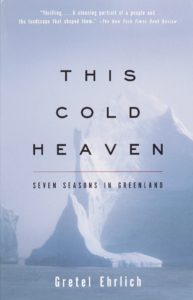
DODIE LOGUE
Arctic Dreams by Barry Lopez and This Cold Heaven: Seven Seasons in Greenland by Gretel Ehrlich. Both books are broad scope portraits of place, but also the minutia of daily life in these places. Both contain gorgeous writing and language, emotion, and much to think about. The Inuit have 23 words for Ice!
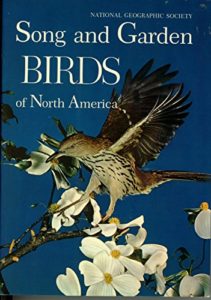
SHARON GUENTHER
Like most of the guides, The Golden Guide by Zim, et al, was my first birding book and remains my favorite. Years ago National Geographic published a 2-volume Birds of North America – one volume with song and garden birds, and the other with raptors and shore/sea birds. Both volumes contained these little vinyl records with bird songs and calls that I listened to constantly to learn more about birds. I wish I still had them but they got lost somewhere in my many moves.
We asked and you responded! Here are some of our Naturalist Journeys client’s most influential birding books:
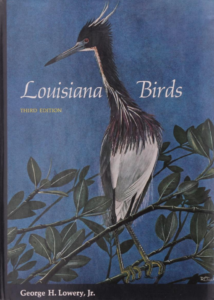
When I was in junior high in the early 1960s, I had to pick a project from our science textbook. I chose identifying all the birds on the school grounds. Our school ground was not very bird friendly, so I changed the area to our rural yard and fields. Thank goodness, our school library had a copy of Louisiana Birds by George H. Lowery, Jr.
There was no Internet, no public library, and no money to buy a bird guide. Lowery’s book started me on a lifelong journey of birding. I was delighted when the third edition was printed in 1974 so that I could own a copy of that wonderful book. I have a shelf of birding books, but I still pull out the Louisiana Birds to read the historical account of one species or another.
Roger Tory Peterson’s Field Guide to the Birds, Eastern version.
I got my hands on my mom’s copy at a very early age (about two) —
interpreting the silhouette page as a dot-to-dot puzzle! I took up
birding seriously at age 10, and had this book pretty well memorized by adulthood. Too bad I can’t still do that now.
In my teenage years, I was introduced to the Western U.S. That first
evening, camping in Rocky Mountain National Park, I couldn’t identify any of the amazing birds, and quickly realized I needed a different book. I still have the tattered Peterson Western guide that we bought the next morning.
Of course, our shelves now contain piles of books about birds from
around the world. I hope we will be able to resume traveling, and
birding, in new countries soon.
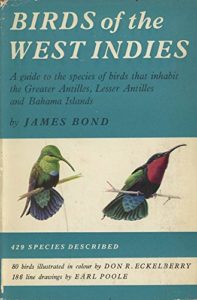
Roger Tory Peterson’s A Field Guide to the Birds which has been my constant birding companion since I got hooked on birding in the mid-1970s. I’m also a book collector, so as exciting to me as spotting a great life bird is finding a great bird book: my ultimate find was a pristine 1934 first edition of Peterson’s guide, which I found on a 3/$1.00 table at a library sale twenty-five years ago.
My first international field guide was James Bond’s Birds of the West Indies. (Ian Fleming was a birder, and named his character after the author.)
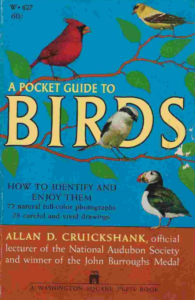
A Pocket Guide to Birds by Allan Cruickshank. My mother’s best friend, and my surrogate mother, who introduced me to birding as an 8-year old, was Helen Cruickshank’s sister, and an ardent amateur naturalist herself. I vividly recall Allan’s escapades following birds to all sorts of unlikely heights, armed only with his giant box camera and an indomitable spirit. He autographed my 1954 copy (I was 10). I was, and am, hooked. The book, with Helen’s photographs, is probably now out of print, but it will always be current for me.
- The Golden Guide to Birds of North America. When I taught second grade, I always did a unit on California backyard birds plus some other species everyone needs to recognize like the American Eagle. I bought many copies of the small children’s version of the Golden guide and used it to teach them how to use an index. I would hear years later that learning about birds and raising and tagging Monarch butterflies was what they remembered about elementary school.
- All and any of Don and Lillian Stokes books. Great multiple photos that I feel more helpful often than drawings.
- My favorite is The Sibley Guide to Birds. Then for traveling I take the smaller east or west Sibley guides depending on where I am going.
- Oaxaca Journal by Oliver Sacks
- A Parrot Without a Name by Don Stap. An expedition into the Peruvian rainforest with Ted Parker and John O’Neill.
- Chasing Neotropical Birds by Vera and Bob Thornton. Excellent photos and travel information.
- Wild America by Roger Tory Peterson and James Fisher. Chronicles a birders trip of a lifetime.
- The Birds of America by Audubon is still the greatest bird book ever.
- Birds Over America by Roger Tory Peterson
- Living on the Wind by Scott Weidensaul

